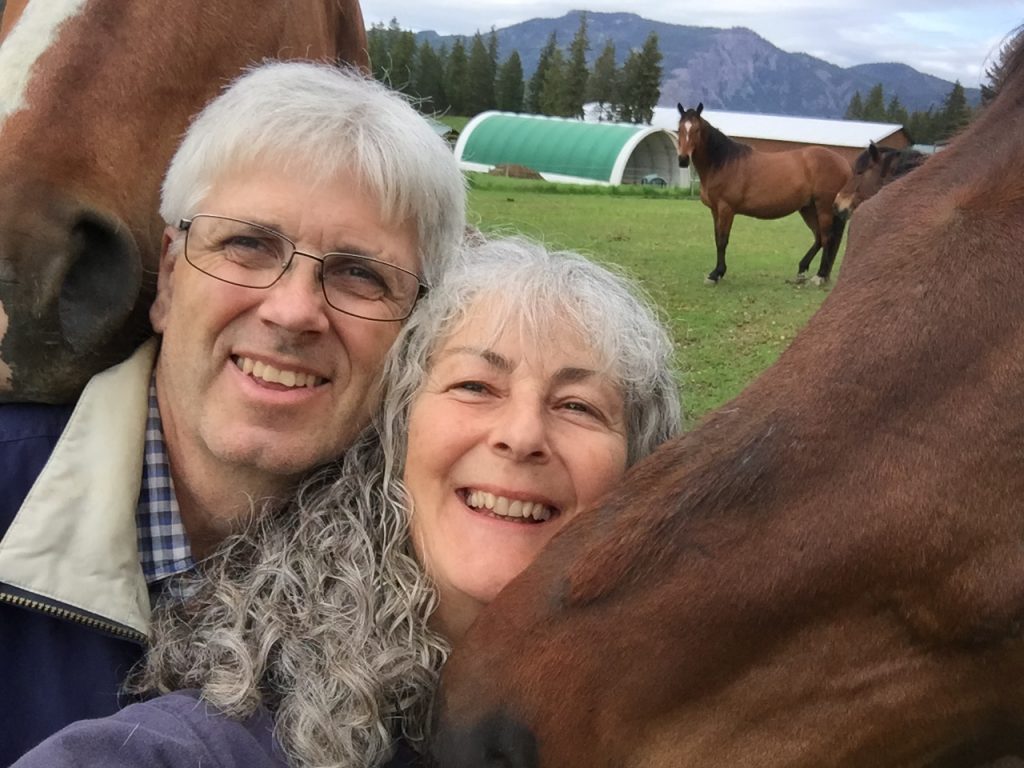Horses express so many emotions as we are around them and working with them.
When it comes to training horses and having the best relationship that we possibly can across the species of horses and humans, the answer to this question makes a huge difference.
But a lot of equine enthusiasts completely miss it which erases any trust that the horse may have in us.
Do you know what emotion that is?
The emotion is curiosity.
I''m going to explain this further, but first here's what happened the other day...
I was out with my horses, checking the water because we have gravity feed water that comes down into the horse bins. So I was checking it, I check it every day.
The dogs were with me and I had my phone with me, and three horses came up to me and were checking things out...what are you doing? What's up? What's going on?
So I took out my phone and I started to take a few photographs. When I was taking the photographs, three more horses joined me, checking me out... blowing in my nose and blowing in my ears...blowing my husband's glasses till they fogged!
They couldn't wait to get in... they were each pushing in to see what was going on with this camera and the other horses crowding around.
I took a few photographs and there was one horse, Poppy, he's actually one of my rescues, standing off in the distance. I went over to him, he's actually really photogenic.
He saw the camera come out ... "oh no, I don't want any part of this. I'm not going to stick around for this." And he left.
And then a few of the more courageous horses came over. He saw that happening as we started to take photos again, with the other horses and he started to get...what did he get?
He got curious.
Curiosity, that's the emotion we want to promote in our horses. Now what's the opposite emotion to curiosity? (I gave you a hint in my story about Poppy and how he was standing off at a distance.)
What emotion was he experiencing there?
He was experiencing fear, whereas the other horses, who are a little more braver, were experiencing curiosity.
Curiosity is the one emotion we want to promote. We want to nurture it. We want to set it up so that our horses become curious about what we're doing.
If you see fear, you know you're not on the right track. We do not want fear because we can't learn when we are fearful...that includes our horses.
How this relates to training is that, if we can provoke curiosity in our training and in everything that we do on a daily basis with our horses, then our horses are learning and they are learning in the correct way.
They are learning about us... that we are not to be feared and that we are something that's curious to them.
How do we elicite the emotion of curiosity in our horses?
Here's some ideas:
#1. Cross train
You can do one day... some cross poles, some jumping. The next day, you can go out on the trail. The next day, you can do a little bit of dressage. You mix it up so that it's not boring.
If you do that, your horses will be curious, "Oh, what's happening today? What are we going to do today? What fun things might we do today?"
#2. Interesting tasks
There's a whole range of interesting tasks that you can use in your training and your approach to training with horses.
You can use balls, you can use targets, you can use clicker training, you can use obstacles. There's a whole array of different tasks that you can use that are interesting to bring curiosity into your horse.
#3. Hang out with your horse
You don't have to always be doing something... You can get your horse one day and just take them out to some grass or just hang out in the pasture. Just do those kinds of things where there's no pressure.
Like my story was earlier, which was just go out and take photographs and their curiosity will bring them in.
#4. Position to involve your horse
I get this question a lot, is okay, "I want to do dressage and I want to get to a really high level in dressage. I don't want to be boring to my horse. So what can I do?"
Well, what can you do to not be boring is not be boring. In other words, you can approach your training in such a way that your horse is involved. It's not just a bunch of "do this," "do that," "push here," "pull there." Here we go again stuff.
You can approach your training so that you encourage your horse to position his body in the most efficient way to get the activity done.
For instance, if it's half pass, if you are positioning your body into the that half pass... Preparing and positioning before the actual movement, your horse will then underneath you position his or her body in the place so that he or she can do that half pass in the most efficient way.
That's how I like to approach training so that I'm constantly building curiosity in my horses.
When they are curious they want to be with you. They want to come and do their work with you. And there's no fear at all.
If you have curiosity, you're on the right track. If you have fear, good indication to re-think what you're doing.
MORE RESOURCES TO HELP YOU BUILD YOUR DREAM HORSE

